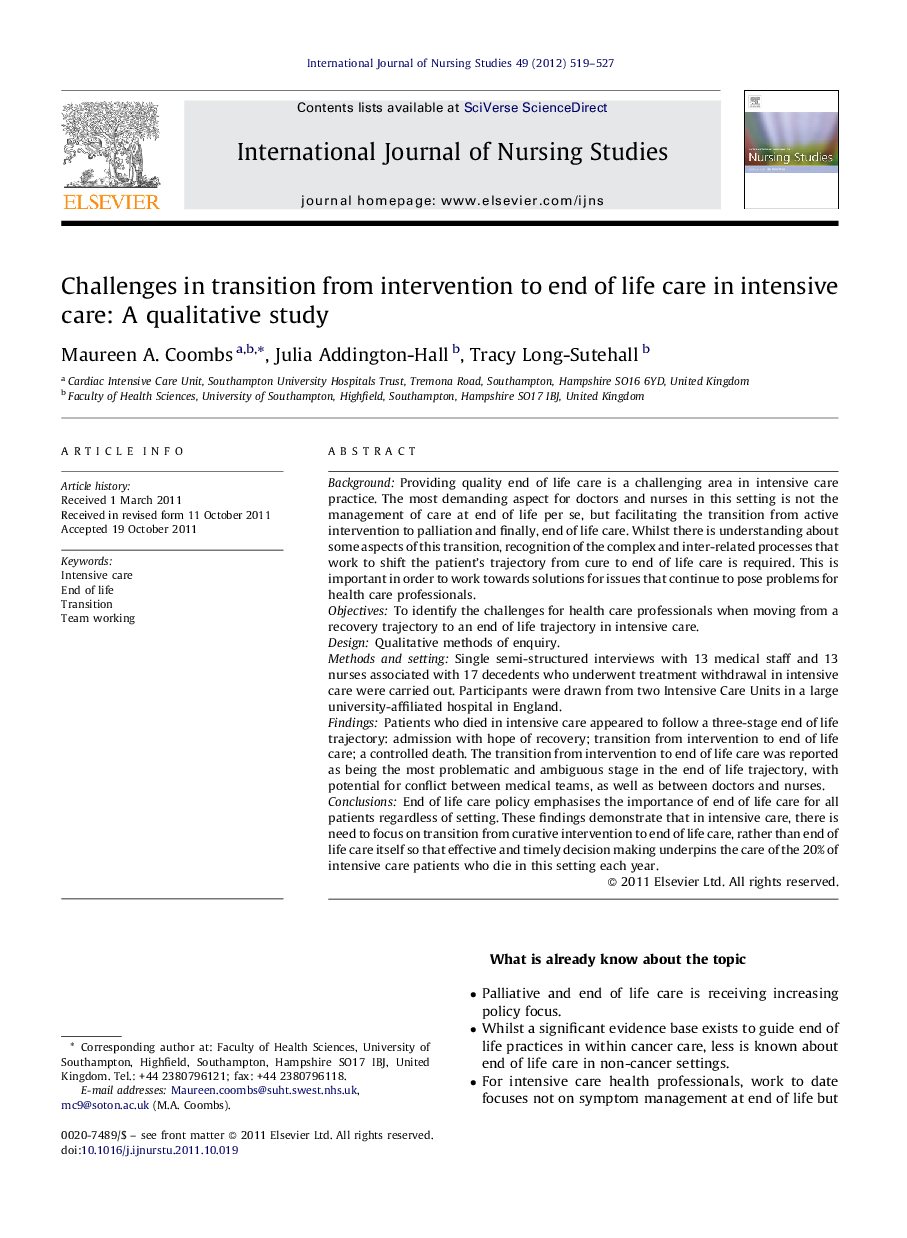| Article ID | Journal | Published Year | Pages | File Type |
|---|---|---|---|---|
| 1076461 | International Journal of Nursing Studies | 2012 | 9 Pages |
BackgroundProviding quality end of life care is a challenging area in intensive care practice. The most demanding aspect for doctors and nurses in this setting is not the management of care at end of life per se, but facilitating the transition from active intervention to palliation and finally, end of life care. Whilst there is understanding about some aspects of this transition, recognition of the complex and inter-related processes that work to shift the patient's trajectory from cure to end of life care is required. This is important in order to work towards solutions for issues that continue to pose problems for health care professionals.ObjectivesTo identify the challenges for health care professionals when moving from a recovery trajectory to an end of life trajectory in intensive care.DesignQualitative methods of enquiry.Methods and settingSingle semi-structured interviews with 13 medical staff and 13 nurses associated with 17 decedents who underwent treatment withdrawal in intensive care were carried out. Participants were drawn from two Intensive Care Units in a large university-affiliated hospital in England.FindingsPatients who died in intensive care appeared to follow a three-stage end of life trajectory: admission with hope of recovery; transition from intervention to end of life care; a controlled death. The transition from intervention to end of life care was reported as being the most problematic and ambiguous stage in the end of life trajectory, with potential for conflict between medical teams, as well as between doctors and nurses.ConclusionsEnd of life care policy emphasises the importance of end of life care for all patients regardless of setting. These findings demonstrate that in intensive care, there is need to focus on transition from curative intervention to end of life care, rather than end of life care itself so that effective and timely decision making underpins the care of the 20% of intensive care patients who die in this setting each year.
